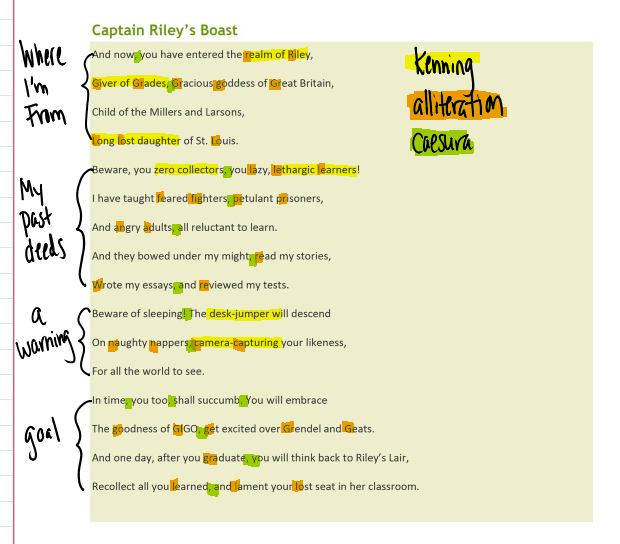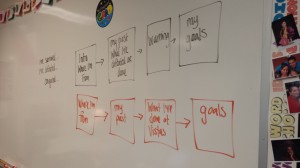Today we talked about Tupac, Biggie, epic rap battles, and flyting. Then, we read about Unferth.
I also explained the Beo-boast today. It’s our second major grade for this grading period. The instructions are in Schology in the Beo-Boast folder, along with one of Beowulf’s boasts, a boast that someone wrote about Donald Trump, and a boast that I wrote about myself. I also put in boasts from history, pop culture, and from former students.
I also showed you guys how I organized MY poem, and then I gave you a simple outline of what you could do if you were struggling with your boast.

Here is what I drew on the board for you –

Another idea that you can use instead of a threat is a promise – a promise to your future or your enemies.
The one in black is MY structure and the one in brown is a suggested one (follow this form to boast about what you overcame as a student, all the changes that you’ve made during your time at Klein Oak, and then what goals you have (graduation and/or career goals).

